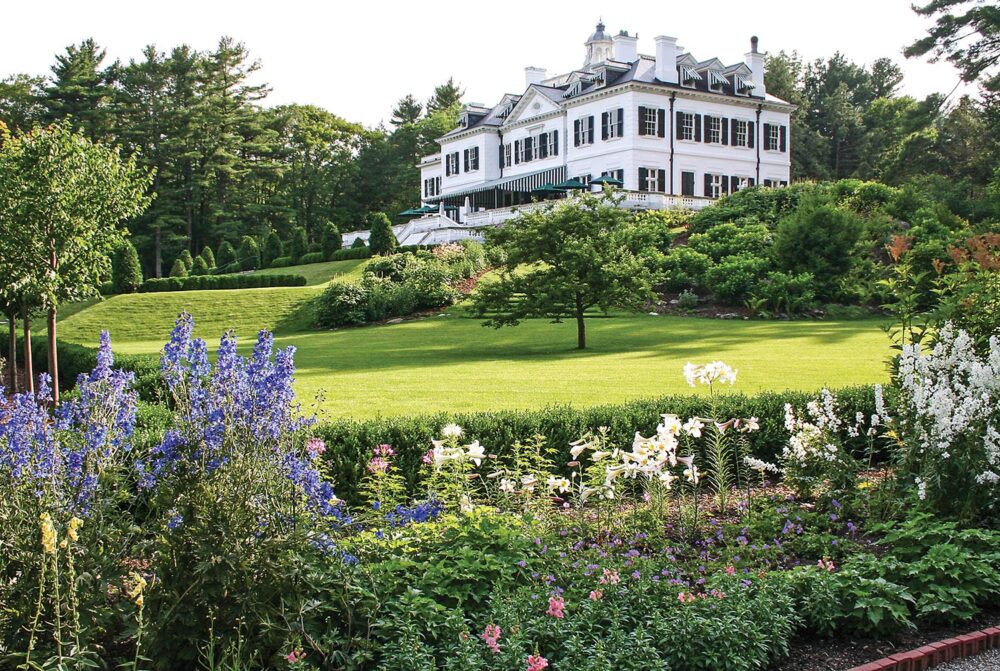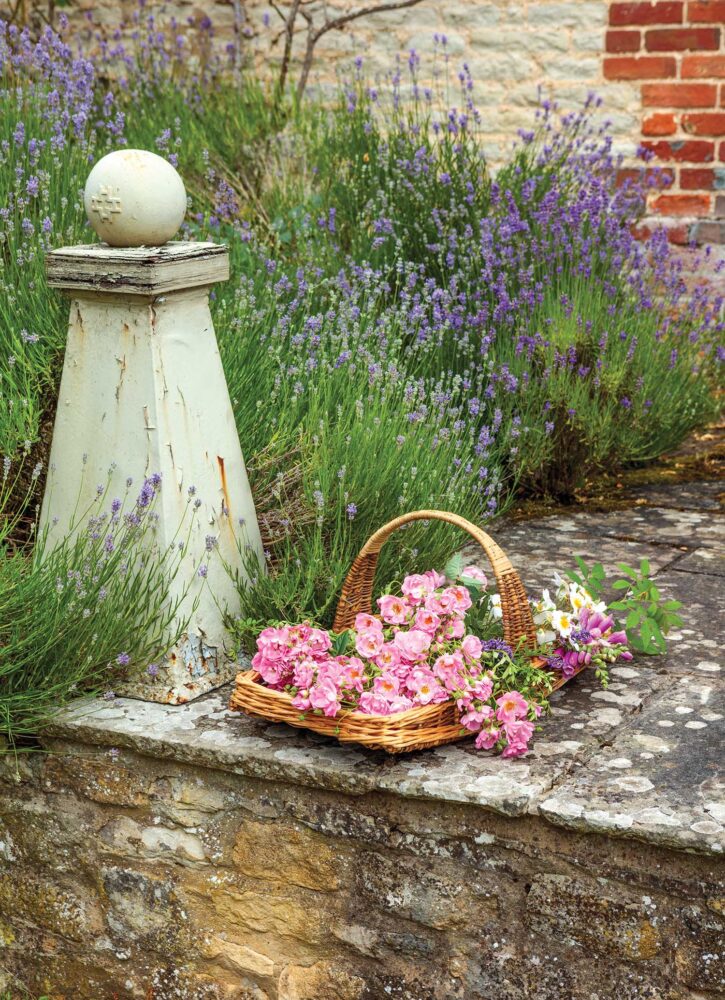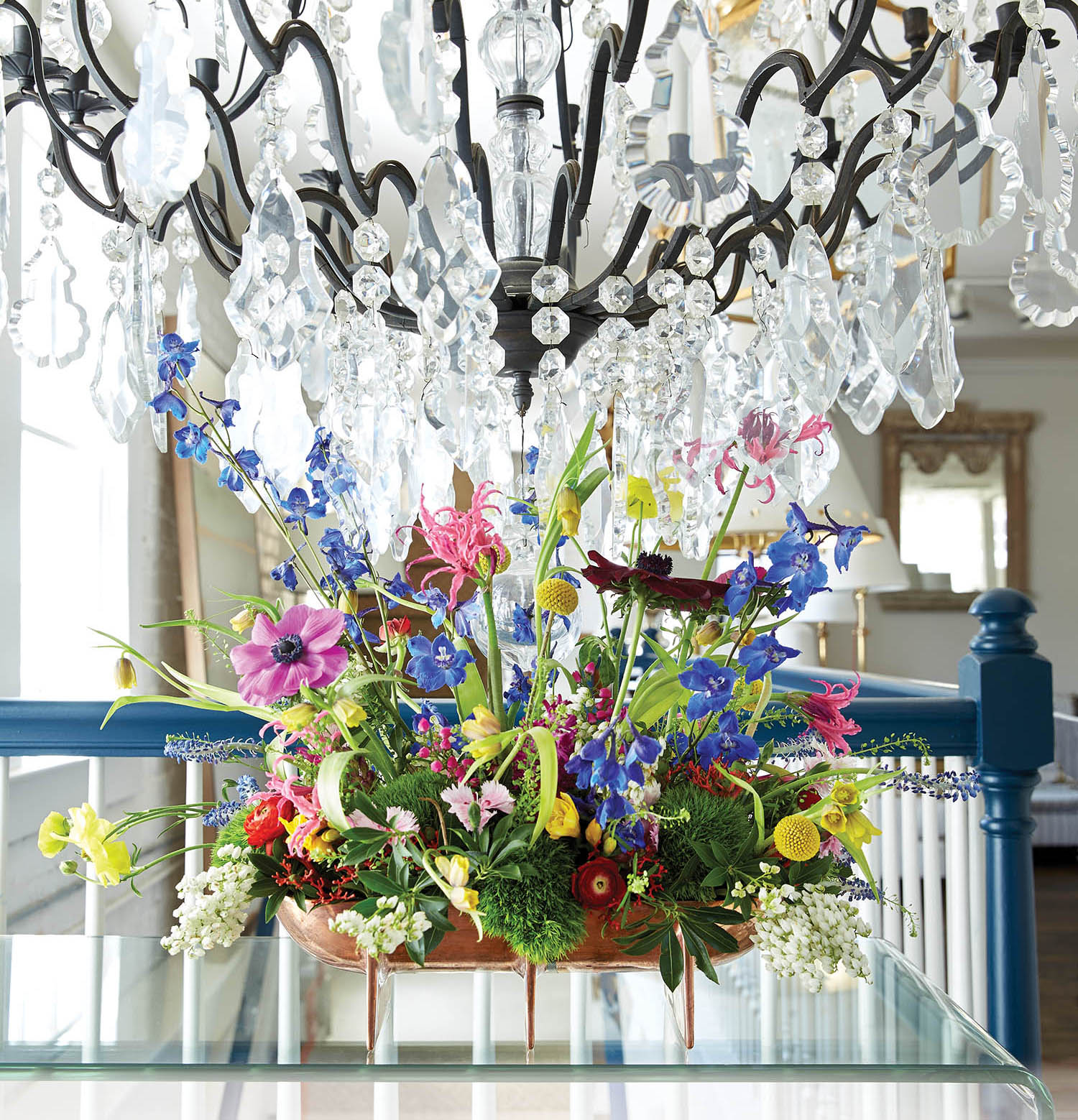
Photo by David Hillegas
The moment Sybil Sylvester spotted a vintage Baccarat chandelier hung low over a glass console at Hiltz-Lauber (a rug, furniture, and lighting shop in her hometown of Birmingham), she envisioned flowers interacting with the crystal pendants. “I wanted the arrangement to look as if I had scooped a section of the garden and transplanted it to a container,” she says. To create her bountiful design, she gathered anemones, delphiniums, butterfly ranunculus, muscaris, sweet Williams, nerines, pierises, fritillaries, hyacinths, freesias, jatrophas, and dianthus.
Indoor Garden Arrangement
See how Sybil’s floral design fundamentals flourish in this indoor garden arrangement and four more compositions.
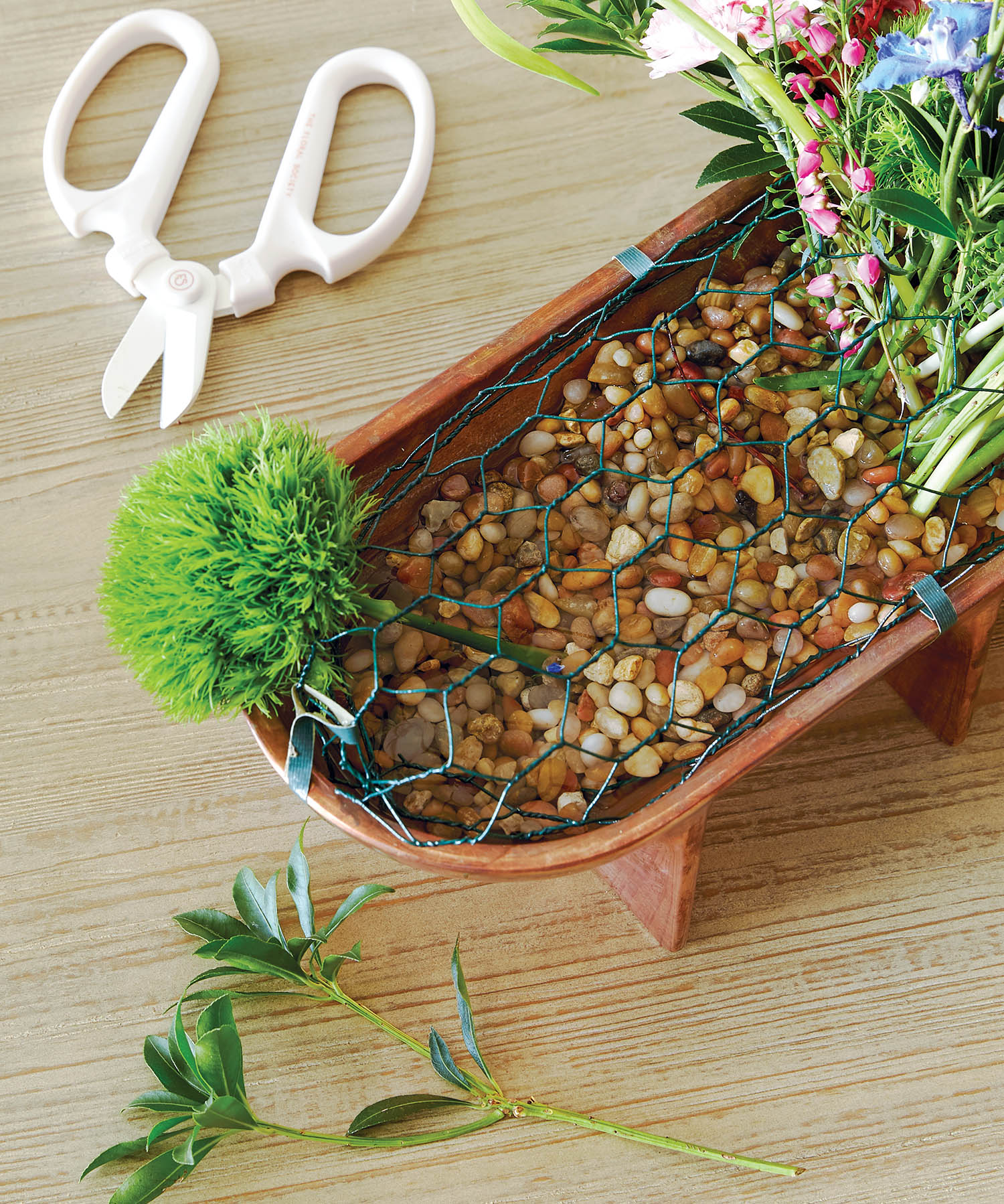
Photo by David Hillegas
1. LAY THE GROUNDWORK
Every gardener knows that good soil preparation ultimately leads to the happiest plants. Creating a sturdy foundation in your floral container does the same thing by providing the support to design. For this arrangement, I used a bed of gravel with chicken wire on top that will secure even the tallest stems.
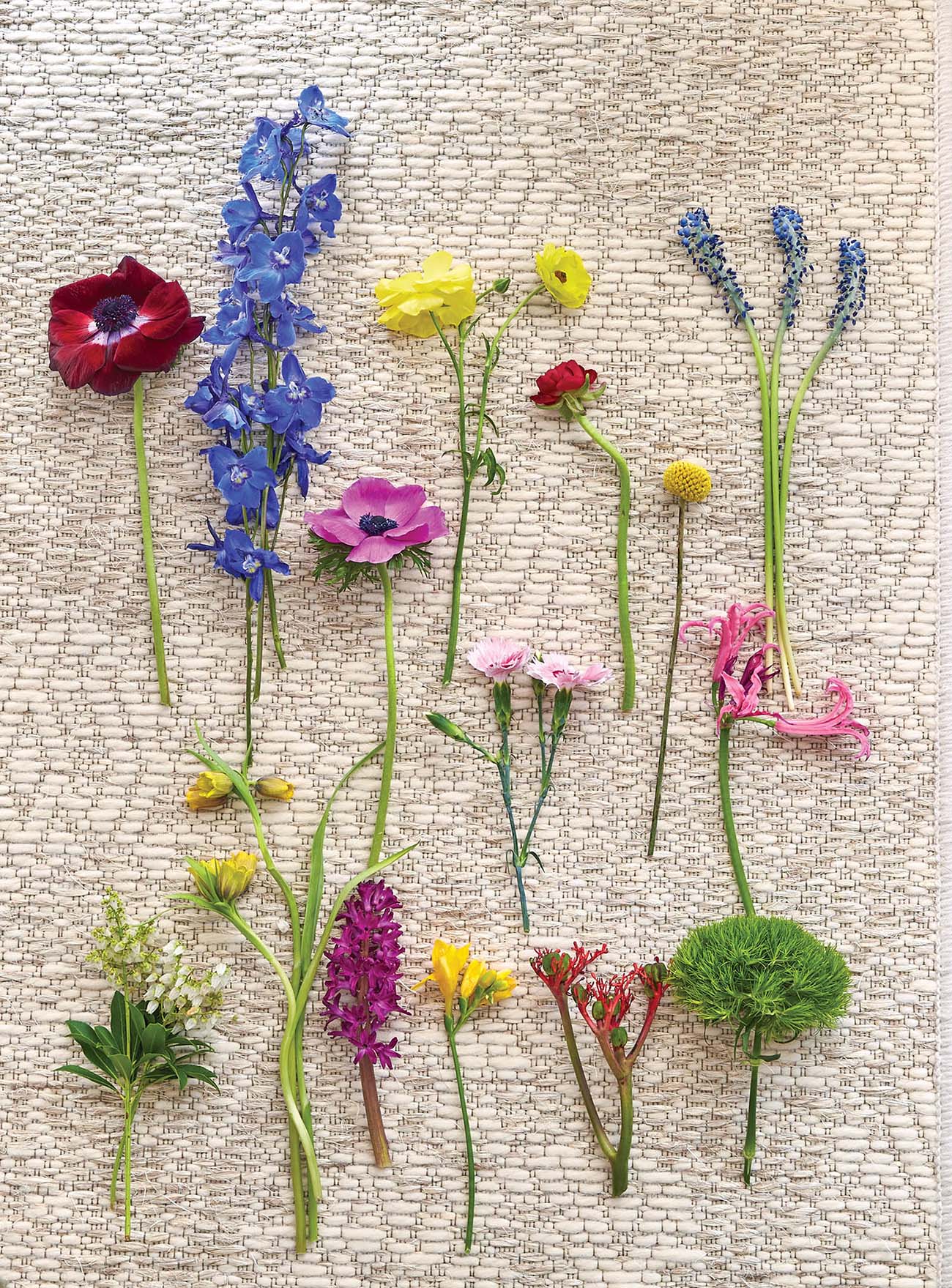
Photo by David Hillegas
2. TELL A COLOR STORY
Mother Nature rivals any paint palette an artist could mix. Whether I’m playing with variations of one tone or creating a cheerful medley of bright hues as I’ve done here, I always use color to lead the eye throughout the arrangement.
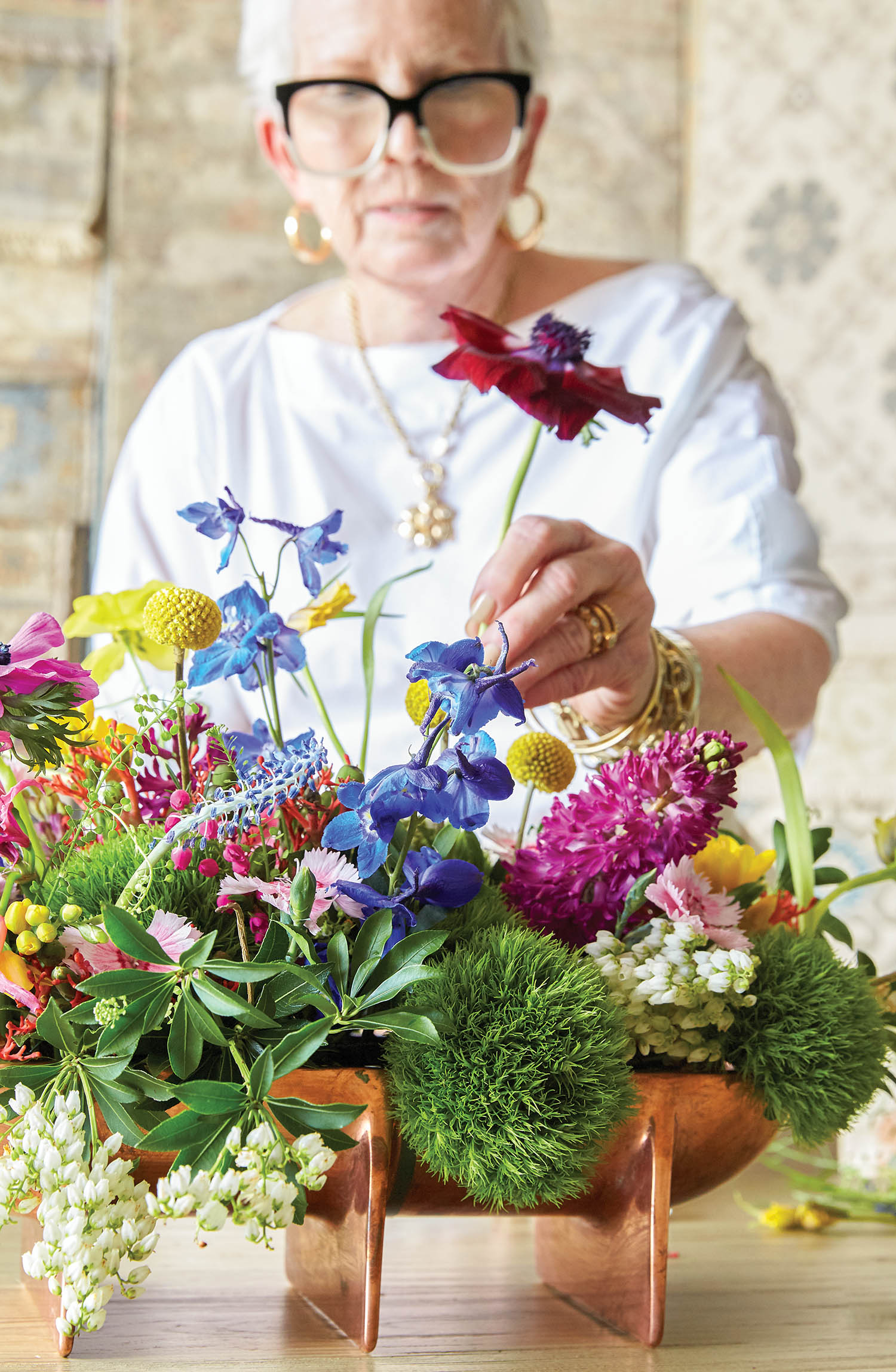
Photo by David Hillegas
3. CREATE INTEREST AT EVERY LEVEL
In the garden, we layer low, medium, and tall plant materials, knowing that even the same varietal won’t always grow at equal speed or height with all flowers facing the same way. That holds true for this arrangement too—from the ‘green trick’ dianthus that serves as the “grass” to the leggy delphinium that reaches toward the “sun,” something captures your attention on every plane.
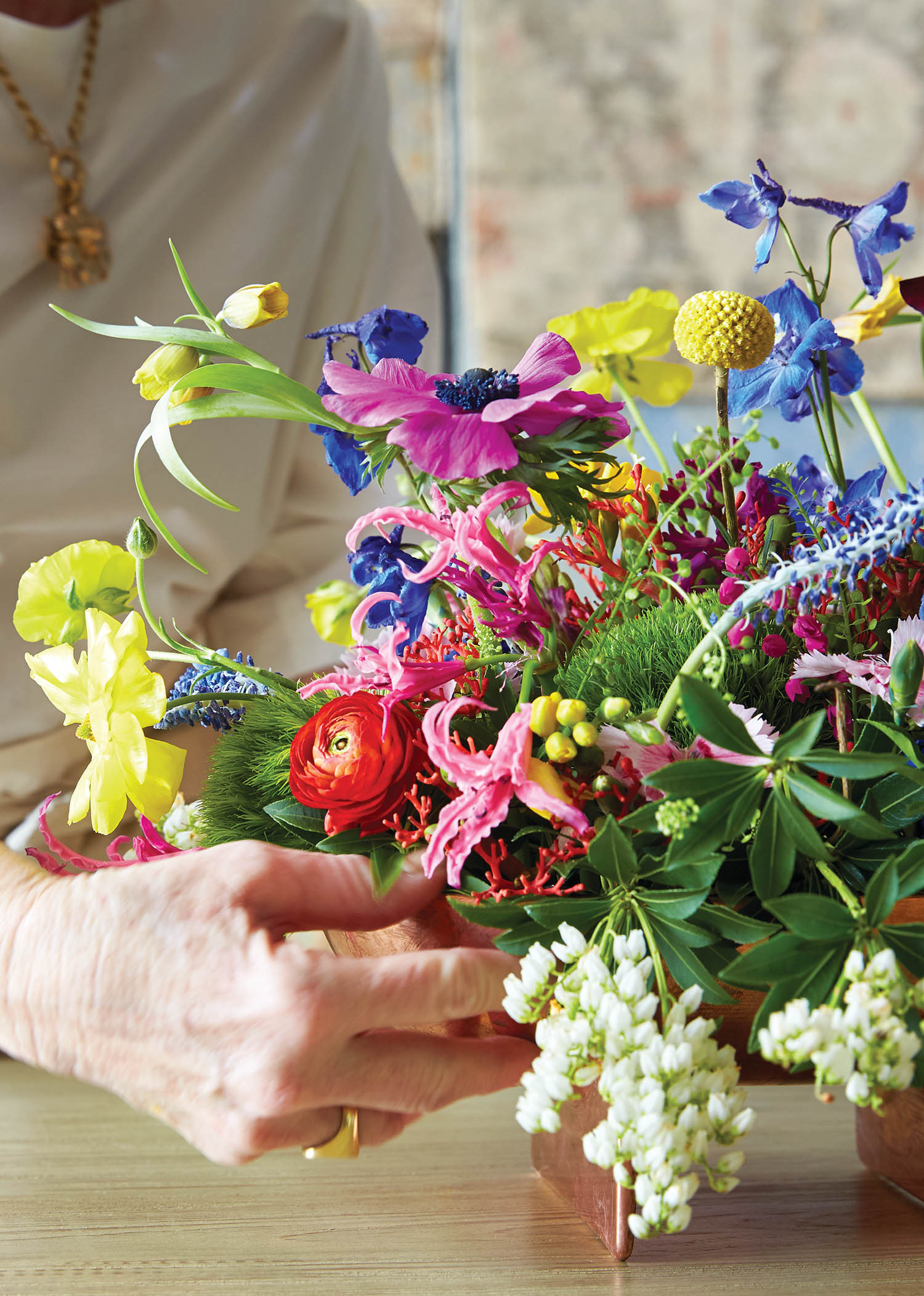
Photo by David Hillegas
4. THINK OUTSIDE THE LINES
I prefer an arrangement to have soft edges at eye level. Just as nature isn’t perfectly manicured, I dangle blossoms over the lip of the container, letting them spill like wayward flowers that can’t quite be controlled.
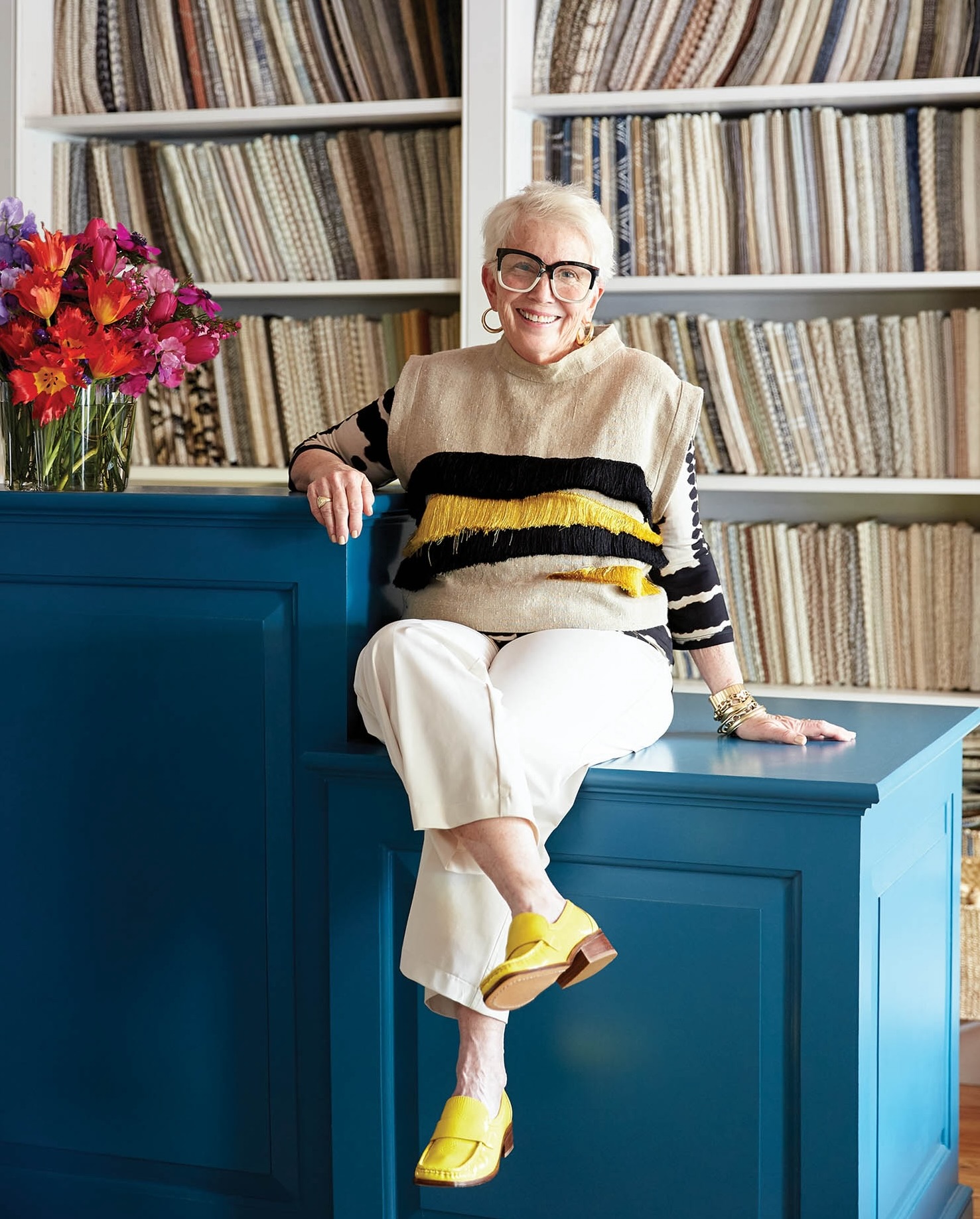
Photo by David Hillegas
“Since my early days of working with flowers, I’ve been influenced by great British floral designers such as Constance Spry and Sheila Macqueen, and my appreciation for English gardens has only grown over time. I love creating lush arrangements where the flowers appear as if they’re actually growing in a garden.”
—Sybil Sylvester of Wildflower Designs
Sybil applies the same floral design fundamentals to these four arrangements inspired by the colors, textures, and objects found within Hiltz-Lauber, a rug and home furnishings gallery in her hometown of Birmingham, Alabama. Click to enlarge the images for a closer look.

Photo by David Hillegas
This evokes the style of one of my greatest influences, Constance Spry, who believed floral arrangements should look like something butterflies and bees would flitter around,” says the designer. “The gloriosa lilies remind me of the butterflies, while poppies and lilies ground the arrangement.”
See Sybil’s video for tips on making a bust arrangement and the surprising material she used for a mechanic!





